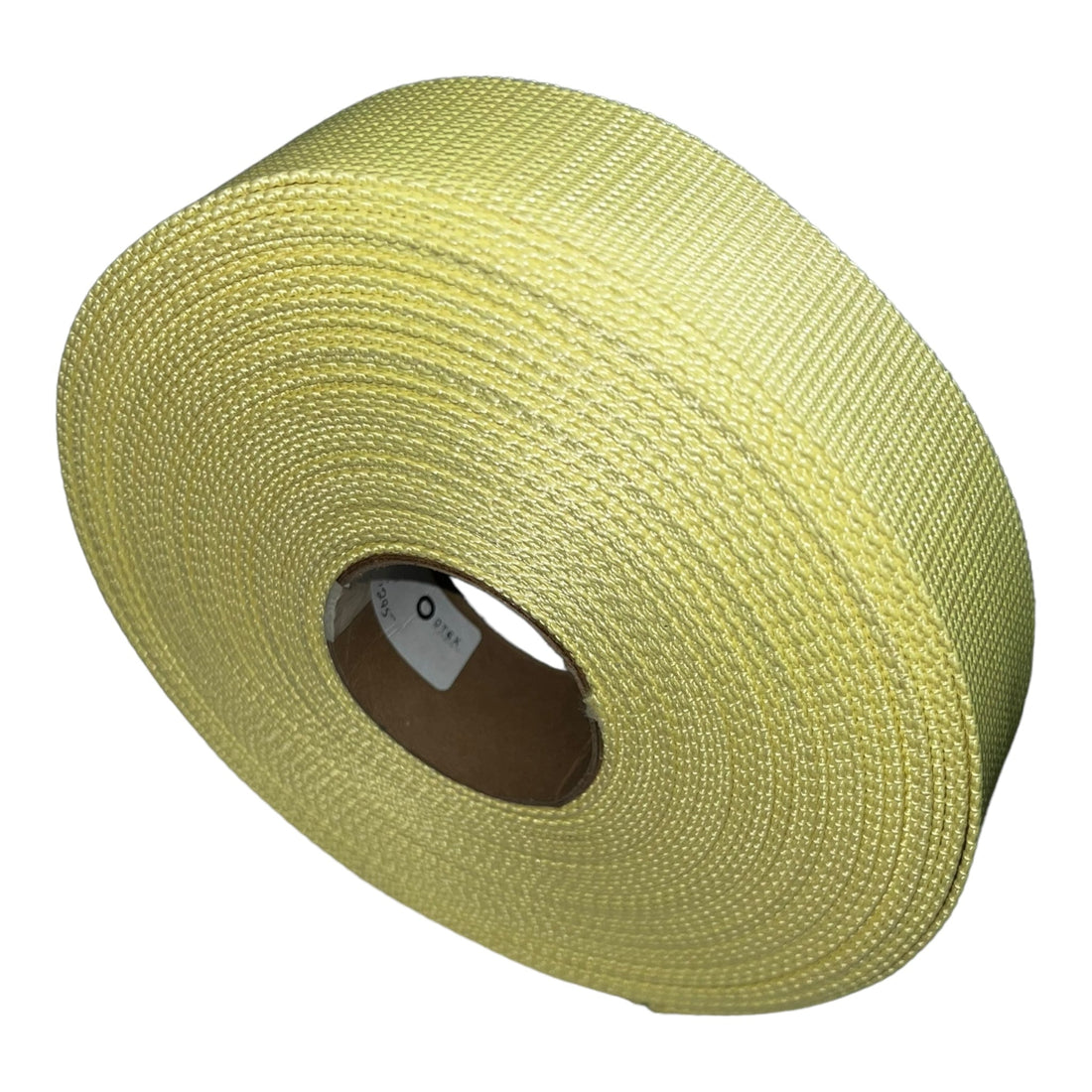
What Makes Kevlar Webbing Special?
Aramid Fiber, commonly known as Kevlar, is a high strength, cut resistant, and extremely temperature resistant fiber that has a wide range of uses.
The term aramid is shortened from the term aromatic polyamide. The first aramid fibers came out in the 1960s, produced by The DuPont Company™. This meta aramid fiber was sold under the name Nomex™. In 1973, DuPont introduced the first para aramid fiber, which utilized prior knowledge of traditional webbing production to drastically increase the tensile strength. They called this Kevlar™. Since being introduced, kevlar has become an essential product in some of the most important and extreme industries and environments. From aerospace, military, ballistic vests, and race cars. Just as useful miles into the earth's crust as it is in outer space, depended on from Antartica to Death Valley, what exactly makes aramid fibers so special?
Temperature Resistance
Aramid fibers are known for their exceptional temperature resistance, making them suitable for use in extreme environments. They can withstand high temperatures without melting or degrading, maintaining its mechanical properties even at temperatures as high as 450°C (842°F). Unlike many synthetic fibers, aramid fibers do not melt; instead, it decompose at around 500-550°C (932-1022°F). It also remains stable and functional at low temperatures, showing little loss of strength or flexibility even in sub-zero conditions. It can withstand temperatures as low as -196°C (-320.8°F) . Contrast this extreme temperature resistance with a polyester webbing, which isn't recommended to use above 90°C (194°F) or below -40°C (-40°F). The are a few keys to the temperature resistance of aramid fibers.
-
Aromatic rings: Its molecular backbone contains benzene rings (aromatic rings), which are stable, rigid structures. These rings can withstand heat without breaking down easily, making the material highly resistant to thermal degradation.
-
Amide linkages: Molecules are connected by strong hydrogen bonds between the amide groups (-CONH). These bonds enhance the overall stability and make it difficult for the polymer chains to break apart under heat.
-
Crystalline structure: The high degree of crystallinity means that the molecules are tightly packed, which reduces the movement of the polymer chains when exposed to heat. This minimizes thermal expansion and provides resistance to melting or softening at high temperatures.
-
Low thermal conductivity: Tightly packed fibers and crystalline structure also contribute to its low thermal conductivity, which prevents heat from easily transferring through the material, providing an insulating effect.
Together, these characteristics give aramid fibers their outstanding heat resistance, allowing them to maintain strength and structure even under intense thermal stress.
Cut Resistance
The other well known trait of aramid fibers is the exceptional resistance to being cut or torn, allowing it to posses an incredible tensile strength relative to its weight. It's often used in cut resistant gloves, apparel, and even bulletproof vests. Here’s why Kevlar is highly cut-resistant:
1.Tightly woven fibers: Kevlar consists of strong, tightly woven aramid fibers that can absorb and dissipate the energy from sharp objects, like knives or blades. The dense weave makes it difficult for cutting instruments to penetrate through the material.
2. High tensile strength: Kevlar fibers have exceptional tensile strength, meaning they can endure significant stress without breaking. This strength allows the fibers to resist cutting forces by stretching and distributing the load across the material.
3. High modulus fibers: Kevlar’s fibers are stiff and resist deformation under tension. When a sharp object comes into contact with the material, the fibers do not easily move apart, further preventing penetration.
4. Layering effect: Kevlar is often used in multiple layers in protective clothing or gloves. Each layer contributes to stopping the cutting force, reducing the impact of the blade by distributing it over a wider area.
Kevlar is an exceptionally unique fiber that has uses in a wide range of places. No current product can provide the exceptional temperature and cut resistance, while remaining extremely lightweight and versatile. While it was once almost strictly used in industry and research, aramid fibers have become available to the everyday consumer, at a reasonable price.
Want to take advantage of the incredible properties of Kevlar? Click here to shop Go-Tow.com's selection of 1" or 2" aramid fiber webbing, starting at only $2.95/ft.
